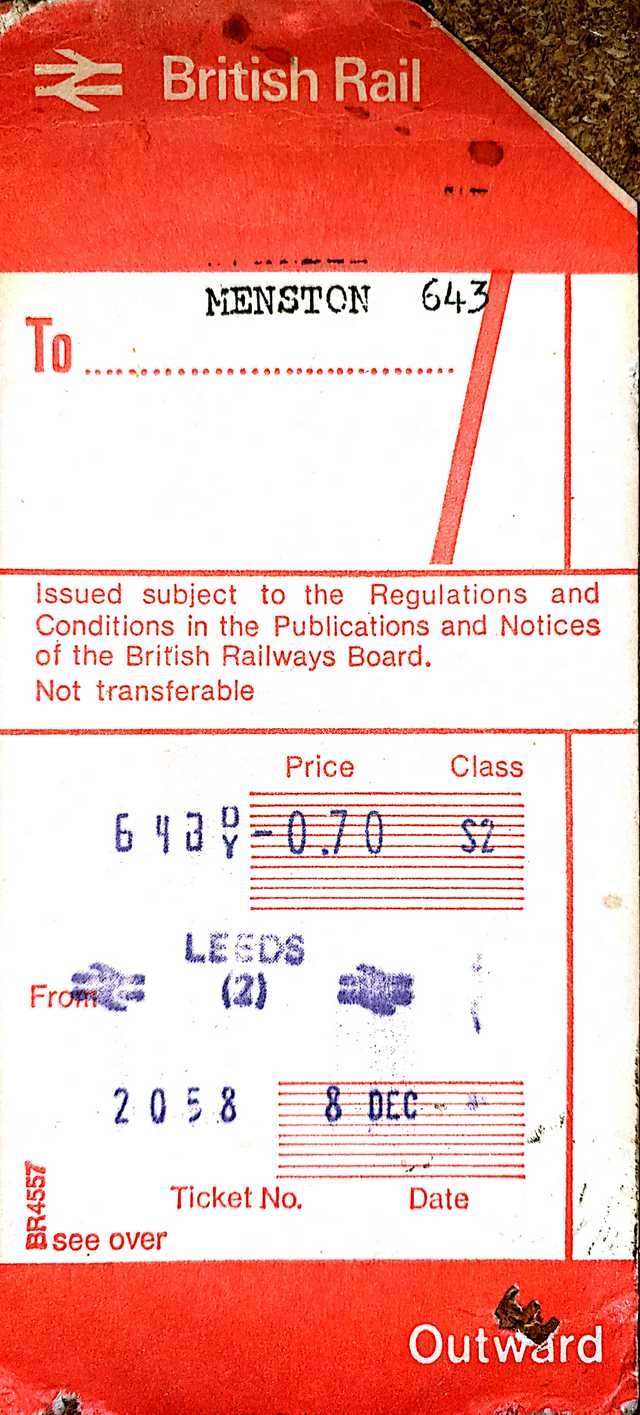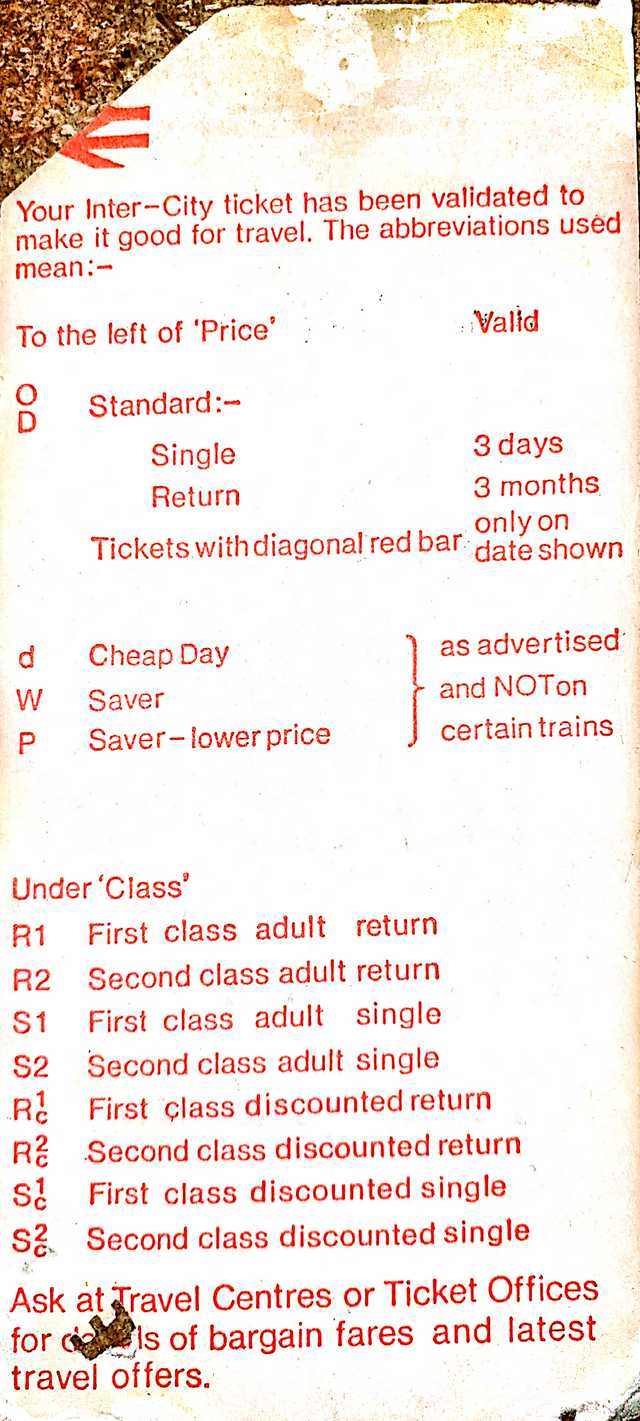This British Rail ticket was being used as a bookmark in a book donated to the charity shop in which I work.
A second class single from Leeds to Menton was 70p. The equivalent ticket today is £4.60.
There's no year on this ticket.
Anybody hazard a guess?
I remember these being used at Leeds. They had huge racks of pre printed tickets with just destination on. Think they came into use when the new ticket office was opened when leeds station was rebuilt in the late 1960's
(Bit of a problem here. i dont know if these tickets pre-date decimalisation (1974) but Leeds station opened 1967. maybe the new ticket hall opened with card tickets.)
The top right corner has been removed because its a single. They used scissors.
the 643 is the station number, pre-printed at the top, and printed by the ticket machine next to the price
This one is unusual because Menston isnt printed in red - its been overprinted later. Rare stations could use one with a blank destination at the top and the clerk would write the station in.
The ticket machines were like massive cash registers.
The audit roll was supposed to be machine readable so statistics for rail use could be done by computer. The number next to the price is supposed to be machine readable.
The clerk would find a ticket blank from a rack, insert it in the machine, press keys for the ticket type, price, date, class etc.
With each lot tickets for a station there would be a card with the prices to that station. If no blank for that station, he would use the national fares manual. The page for Menston would have 643 on it so he could type it in the machine.






 )
)